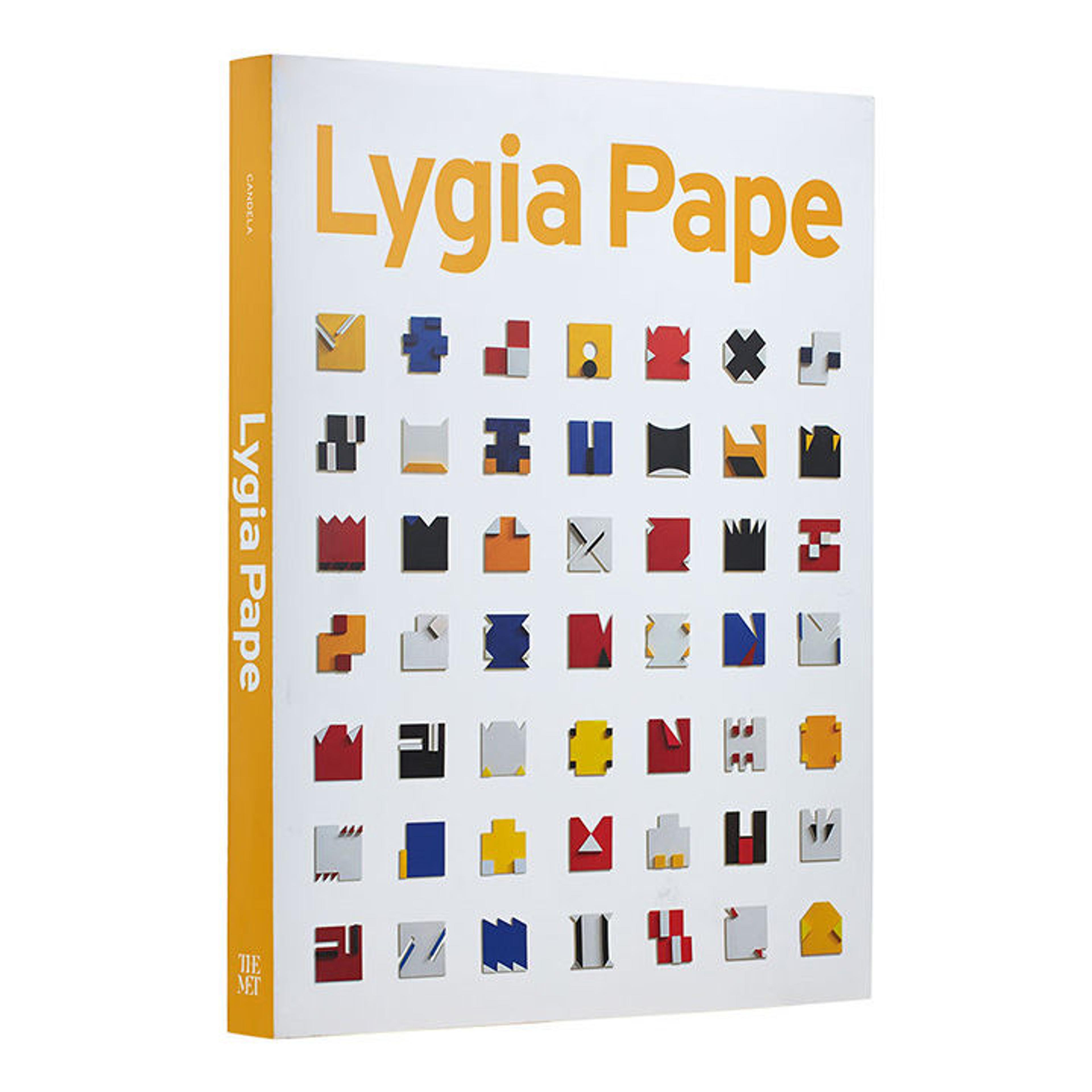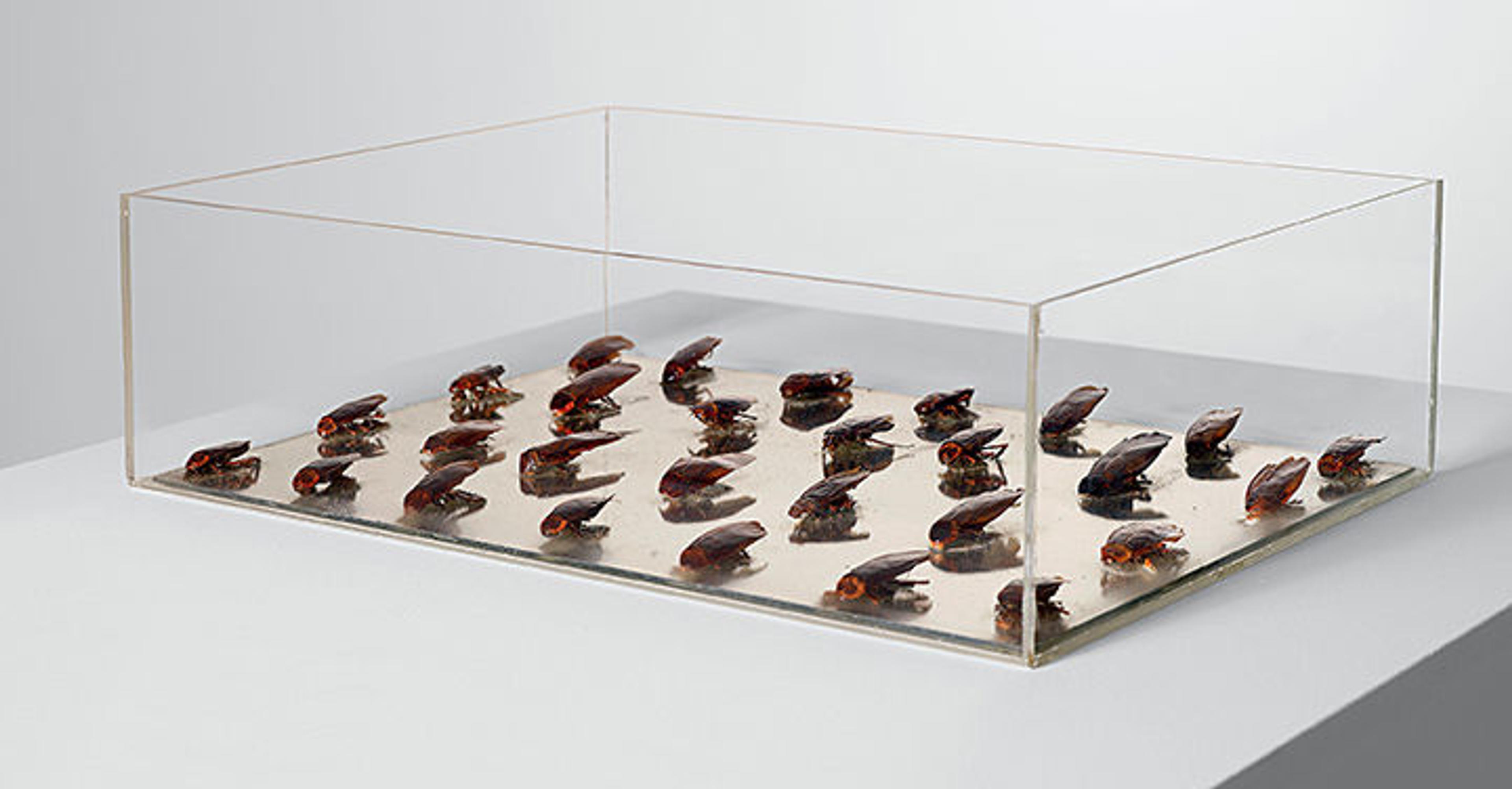
Lygia Pape: A Multitude of Forms, by Iria Candela (with contributions by Glória Ferreira, Sérgio B. Martins, and John Rajchman), features 242 full-color illustrations and is available at The Met Store and MetPublications.
«Brazilian artist Lygia Pape (1927–2004) is known for her participation in Neoconcretism, the experimental art movement that sought to rework European avant-garde abstraction to suit a new cultural context. Pape engaged with a wide range of media, constantly experimenting in a quest to challenge the canonical and discover unexplored territories in modern art. The beautifully illustrated Lygia Pape: A Multitude of Forms accompanies the first major exhibition in the United States devoted to the artist's work.» This landmark publication features essays by art historians in both North and South America, two previously untranslated interviews with the artist, and an illustrated chronology. The book is a testament to Pape's lasting importance to the modern art and culture of Latin America and her position as a major figure of the international avant-garde.
I spoke with Iria Candela, the author of the catalogue and curator of the exhibition, about Pape's career and her legacy in the history of modern and contemporary art.
Rachel High: Pape's artistic production is incredibly varied. She used diverse materials, from traditional canvas and paint to more shocking media, like live ants and cockroaches. How did you decide which works to include in the exhibition and in the book to represent her body of work?
Iria Candela: Lygia Pape was a pioneer transmedia artist for her time. As early as the 1960s, she was engaging in a wide range of formats and media, which is extraordinary. She was fearless for experimentation in that regard; she even embraced technology such as Super 8mm and Super 16mm film.
Lygia started working in the early 1950s and made art through to the early 2000s. She was prolific. Despite slowing down at certain points in her life for many reasons, including historical circumstances in her country, she kept producing and accumulated a large body of work. For the book and the show we had to be very selective, because they cover five decades of material. We tried to be true to the most important breakthrough moments of her career.
One of the most significant moments for her was when she was involved in the Neoconcrete group, which sought to challenge the conventions of painting and the picture plane by inserting three-dimensional objects into real time and the real space of the viewer. She was working in many different forms, from book to ballet. She was even merging different media, as in Book of Creation, which is part book and part sculpture.

From left to right: Lygia Pape (Brazilian, 1927–2004). Luz (Light); O homem era gregário e semeou a terra (Man Was Gregarious and Sowed Seeds on the Land); O homem construiu sobre a água: palafita (Man Built on Water: A Stilt House); O homem descobriu que o sol era o centro do sistema planetário (Man Discovered that the Sun Was the Center of the Planetary System); Detail of Livro da criação (Book of Creation). All 1959–60. Gouache on board, 16 pieces, each piece 12 x 12 in. (30.5 x 30.5 cm). Museum of Modern Art, New York, Gift of Patricia Phelps de Cisneros, 2001 (1349.2001.a–r)
The period of involvement in the Neoconcrete movement—and the way she engaged media during that time—was key for Pape. You mentioned the cockroaches, which represent a critical moment in 1967. Brazil had experienced a coup d'état in 1964; they were under a dictatorship. Hélio Oiticica had organized an important exhibition of modern art entitled Nova Objetividade Brasileira in Rio de Janeiro in 1967, and he invited his good friend Lygia to participate. She had not been making art for around four years, but she decided to return to the visual arts for this exhibition by presenting a box of cockroaches. At that moment she expressed her interest in inserting living things into art. By presenting something that created disgust, something that looked like anti-art, she was creating a metaphor for these moments of uncertainty in her country. The selection of works in the show responds to significant points in her career and also tries to present the best of her outcomes in engaging different media.

Lygia Pape (Brazilian, 1927–2004). Caixa das baratas (Box of Cockroaches), 1967. Acrylic, mirror, mummified cockroaches, 10 1/8 x 14 x 4 in. (25.5 x 35.5 x 10 cm). Fundação de Serralves—Museu de Arte Contemporânea, Porto, Portugal, Acquisition 2006
Rachel High: In your essay you write that Pape "worked in a dual context of artistic and political challenge." How was this evident in her work in the second half of the '60s, during the rise of the dictatorship in Brazil?
Iria Candela: Her position is interesting. First of all, she was a woman artist. After the war, women artists working in Brazil had the opportunity to become an important part of the avant-garde movement. The artistic avant-garde was very active in Brazil after the Second World War. It was an incredible shift during which the whole community of artists—but also designers, architects, and intellectuals—were committed to the modernization of the country. It was challenging in terms of art, because they wanted to create new forms for the new society. On the other hand, by the late '60s they experienced a moment of inversion of history with the dictatorship.
The question then became, "How can I continue making art that somehow responds to the political situation?" Pape made work in response to this question, including the performance Divisor. Divisor is a live sculpture that consists of a multitude of people parading in the streets as if they were part of a rally, or a demonstration, or even the Rio Carnival parade. It is a group of people carrying a piece of white fabric—a very large, monochrome canvas—through the streets. This is definitely a poetic and political image, activating a debate around the question of public art and public space.

Lygia Pape (Brazilian, 1927–2004). Divisor (Divider), 1968. Performance at Museu de Arte Moderna, Rio de Janeiro, 1990
Rachel High: The book includes two interviews with Lygia Pape, translated into English for the first time in this publication. What made you decide to include the artist's own words, and how do you think these texts help the reader understand her work?
Iria Candela: This is the first large monographic exhibition of Pape's work in the United States, which means that there aren't many scholarly texts available on her work in the English language. What we wanted to do with the book was not only to write a sizable scholarly reassessment of her legacy, but also to bring out her own words and allow the readers to discover who this woman is. As I mentioned earlier, it's so important to understand that she was a woman artist working in very particular historical circumstances. I think readers will understand that better by reading these interviews. It's worth pointing out that the book also includes a chronology, the first one compiled on Pape's work. It's quite an achievement, and one that is overdue for an artist who is a key figure of modern art in Brazil. I think it's very important that the book includes all of these elements.
Rachel High: A recurring theme in Pape's work that you mention in your essay is the breaking down of boundaries between art and life, which was also a preoccupation of European and American artists in the '60s. How does Pape's work fit into the larger art-world narrative from which she is often excluded?
Iria Candela: Exactly. With this book and exhibition, we are trying to expand and rewrite the canons to include figures who until now were perceived as having marginal or secondary voices. These artists were very much involved in the international questioning of traditional modes of art production. Pape, among others, was engaged with challenging conventions through unbound experimentation. These artists subverted the idea of the pedestal, or the frame, and instead inserted their work into actual, real, everyday life. They understood art as being as much a process as a final product. These were key themes and ideas that resonated in contexts worldwide; but in Brazil, Pape and her peers were very much a part of it.
Related Links
Lygia Pape: A Multitude of Forms, on view at The Met Breuer through July 23
The exhibition catalogue is available through MetPublications and at The Met Store.
Read a blog article on the MetLiveArts Blog in which a participant in The Met's recent staging of Lygia Pape's Divisor (Divider) recounts her experience in the event.
Watch the MetLiveArts performance of Lygia Pape's Divisor (Divider).